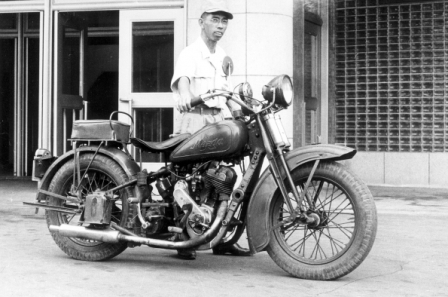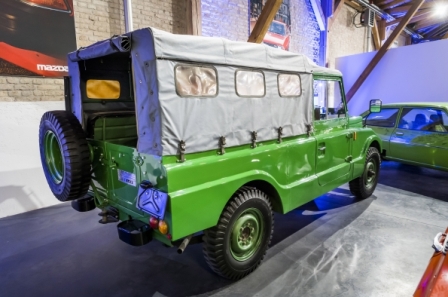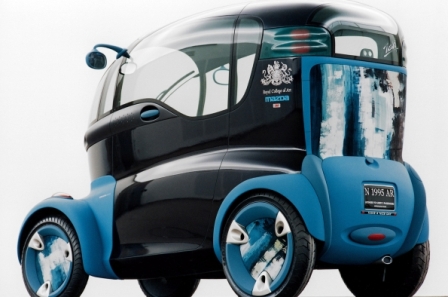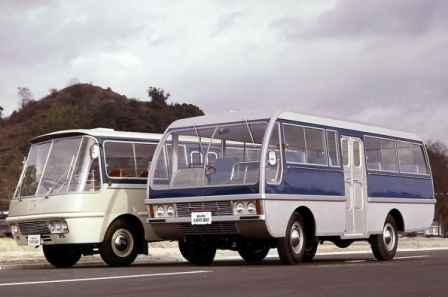In the year that Mazda marks its 100th anniversary and celebrates the people, products and achievements of the last century, we take a look at some of the most unexpected, unusual and little-known vehicles produced by Mazda.
Whether it’s a curious concept, a long-forgotten prototype or a rare production car; Mazda’s history features a broad spread of vehicles that tell a story of the engineering ingenuity and convention defying spirit that runs through the business.
This courage to question common practices and forge new paths in engineering and design that others considered unfeasible has driven the team at Mazda since 1920. Along the way Mazda was the first Japanese brand to win the Le Mans 24 Hour race, commercially launched the rotary engine in the iconic Cosmo Sport 110S, created the world’s best-selling two seat roadster: the Mazda MX-5 and with Skyactiv-X introduced the world’s first production compression ignition petrol engine.

Yet away from these famous significant moments and the countless coupes, saloons, sports cars, family cars, commercial vehicles and roadsters Mazda has become famous for, there’s a hidden story of the projects forgotten by time, so we dig even deeper into the history file to unearth the Mazdas you’ve never heard of. The first of which is the Mazda motorbike, which for a company that today is famed for creating a range of attractively styled and great to drive SUVs and cars, is a real surprise.
Having started life as a cork products manufacturing company in 1920 before progressing to engineering when industrialist Jujiro Matsuda took charge of Toyo Cork Kogyo Co., Ltd in 1921 and transformed the business first into a machine tool producer. The progression from here to cars via three-wheeled trikes like the 1931 Mazda Go is relatively well known, but the fact that before this Mazda produced a prototype motorcycle is a little-known paragraph in the Mazda history book.

Motorcycle racing was popular in Japan in the late 20s with most of the bikes imported or assembled in Japan from imported parts. Toyo Kogyo, as Mazda was then known, wanted to build a domestic Japanese bike and began development of a prototype in 1929. A 250cc 2-stroke prototype motorbike was revealed in October 1930 and to everyone’s surprise it won its first race beating a British-made Ariel, which were one of the most-popular bike brands in the 30s and well-respected in Japan.
Toyo Kogyo went on to produce 30 more motorcycles in 1930, but commercially Matsuda took the decision to instead focus attention on developing the practical Mazda Go three-wheeler, setting the company on the road to success in automobiles rather than motorbikes, and leaving Mazda’s flirtation with motorbikes as a small snippet in the 100-year story of Mazda.

Mazda’s first car also never made it beyond the gestation period either, in 1940 Mazda built a small two-door prototype car called the PKW prototype, but the unset of World War Two meant it never reached production and Mazda’s post-war reconstruction focused on the production of the Type GA and Type GB three-wheeled Mazda Go inspired three wheeled trucks and their ever bigger and more sophisticated successors.
However, amongst these successful and popular three-wheeled trike trucks Mazda also produced another one of its little-known four-wheeled pioneers – the Type-CA one-ton four-wheeled truck, which was a small open sided canvas roofed, split-screen open-decked truck that bore some resemblance to a Willys Jeep. It predated Mazda’s first production car the R360 Coupe by ten years and wasn’t as famous as Mazda’s three-wheeled trucks.
While the 1960 Mazda R360 was Mazda’s first car and started a lineage that leads all the way to today’s range, Mazda’s history includes commercial vans, pick-ups and light trucks. But while the smaller mini-bus vehicles based on the different generations of Mazda Bongo are relatively well-known, other bus models fall into the ‘Mazdas you’ve never heard of category’. Mazda sold its first bus in 1960, it was a 13-seater based on the D1500 cab-over compact truck and was sold to the Japanese Defence Agency. The interior was flexible enough that with the seats folded it was designed to transport injured soldiers on stretchers, and the D1500 bus was exported to the Middle East with centre-opening freestlyle doors at the back that enhanced its usability as an ambulance.

Mazda’s first bus for general public use was the 1965 25-seater Mazda Light Bus Type-A. Based on a concept shown at the 1964 Tokyo Motor Show, with its huge curved laminated safety glass windscreen and futuristic styling it was a world away from the traditional buses found in Europe in the 60s. Into the 1970s Mazda continued to produce upscale mini-buses using the Parkway model name and in 1974 even introduced the world’s first rotary engine powered bus: the Parkway 26.
Incredibly, as futuristic as the 1965 Light Bus looked and as unique as the 1974 rotary Parkway bus was, both looked positively conventional compared to the 1974 Mazda CVS Personal Car Concept. Mazda’s look into transportation possibilities outside the realm of driver-controlled vehicles, CVS stood for computer-controlled vehicle system, and the CVS was a wheel at each corner box with sliding doors and a spacious interior designed for passenger comfort, including big leather chairs and a telephone. Tested on a Mazda designed rail track, this 70s self-driving pod looked like futuristic fantasy in 1973, but today strangely familiar to anyone who’s ridden on the business parking pods at Heathrow airport terminal five.
However, forward-looking computer-controlled transport pods weren’t the only 70s oddities that fall into the Mazdas you’ve never heard of category. Created to meet Mazda’s desire to have a large executive car to be used by Japanese government officials, the little-known Mazda Road Pacer AP was launched in 1975. It used Holden HJ bodies, which were shipped to Japan without engines, whereupon Mazda fitted the 135ps 13B rotary engine. Designed to take on the grandly named Toyota Century, Nissan President and Isuzu Statesman De Ville, the Road Pacer AP featured luxuries such as speed related central locking and even an inbuilt dictation machine. Only sold in Japan, just 800 were produced between 1975 and 1977.

Another global anomaly in Mazda’s history is the Mazda Pathfinder – a traditional 4X4 exclusively assembled and sold in Burma it was a rugged off-roader popular with the military and police. Powered by a 90ps engine it was offered with either a canvas roof or as enclosed nine-seat version, largely unknown in the rest of the world, a few can still be seen on the roads of Myanmar today.
Even stranger than the Burmese built off-roader, futuristic bus or the Australian based limousine is the 1991 Mazda Suitcase Car. The development of a functioning car built into a piece of luggage came about thanks to the 1991 ‘Fantasy yard’ event – an inter-departmental contest to see which group of Mazda employees could come up with the most innovative and creative solution to produce a moving machine.

A select group of seven engineers from Mazda’s manual transmission testing and research group purchased the largest Samsonite suitcase they could find and a quarter size pocket motorbike and set to work on their idea. The 33.6cc two-stroke engine, handlebars from the minibike were fitted into the suitcase, with the rear wheels slotted onto the outside of the case, while the front wheel would pop through a removable hatch in the front. The suitcase car took just minutes to assemble and had a top speed of 19mph, while the original prototype was accidentally destroyed just a few months after the ‘Fantasy Yard’ event, one Mazda suitcase car still remains in existence.

The same sense of freedom of thinking for engineers and designers that led to a collaboration with the London Royal College of Art in 1993 to sponsor their design project to design to come up with a taxi concept for a future where space would restrict vehicle size. While not an official Mazda concept, Mazda assisted by building the prototype, which was a futuristic looking narrow-track pod shaped mini-car, that was 20 years ahead of its time.
Today, many of these oddities are a distant memory, but alongside the more famous models, competition success and records they form part of the history of Mazda – an independent car brand that has always pushed the boundaries of design and engineering to create award-winning vehicles and unique products.
Today, Mazda continues to defy convention to make things better, and as the firm enters its second century, the ingenuity and passion for automotive excellence that has flowed through the Mazda company for its first 100years is still at the heart of everything the company does.




